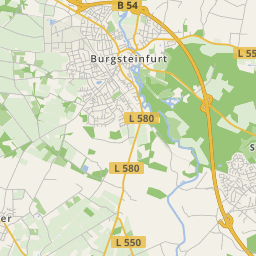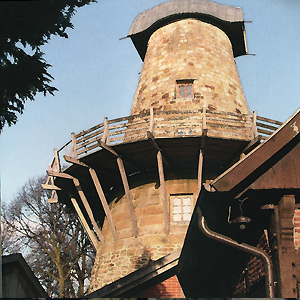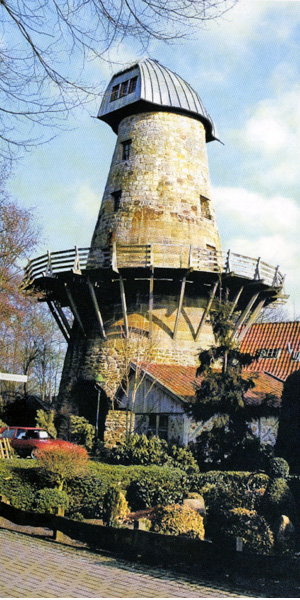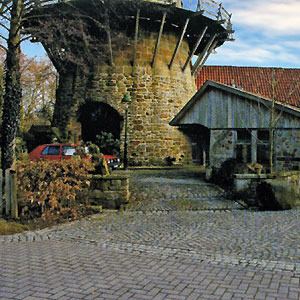












The lower part of the former oil and fulling mill, was probably an early bastion and gun turret. It is built with small quarry stones. The middle part consists of carefully hewn ashlars, probably from the demolition material of the castle, which was razed in 1680. The most northwestern corner of the 'Hagen', was an exposed location with free lines of fire in direction Rheine and Hörstel.
The outer moat zone with the Mersch- and Mörchen moat was created by the prince-bishop Christoph Bernhard von Galen (ruled 1650 – 1678) after 1652.
The clothier and wall makers' office was of great importance in Bevergern. 35 masters founded the guild of wall makers in 1599. Already in 1654, for the first time, the wall makers requested authorisation to build and operate their own fulling mill, because the conditions at the mill of the monastery Gravenhorst became more and more adverse. When they had failed to get the concession due to the monastery's opposition, they tried again in 1785 and 1797, as they had to go Rheine, Gravenhorst or even Bramsche or Plantlünne to full their clothes. On the 1st of May 1799, prince-bishop Maximilian Franz granted a concession to build a new mill. The fulling windmill was equipped with a hammer fulling machine and was powered by wind. Verifiable the only one in the upper cathedral chapter Münster. The state archive Münster preserved the blueprints from 1798. But the mill was only built in the year 1804. That was probably connected with the dissolving of the prince-bishopric Münster in 1803 and the duration of the millers' lease contract in Rheine.

On the 28th of February 1808, the bailiff Gerhard Levedag bought the oil and fulling mill and with the testamentary contract from the 30th of July 1838, the mill was inherited by his son. The mill was in operation until 1923; at the end with a diesel motor. At the end of the 19th-century, the sails and the wooden gallery were still there as one can see on the old photo. In the course of time, the mill fell more and more into disrepair. Beginning of the 1970ties, Theres and Alfons Vormweg purchased the ruin stump, restored it and moved in. In the 1990ties, the gallery was rebuilt and the tower raised by 6metres to its original height. Whitsun 2004, the tower received a new hood. Part of the ensemble is also a Heuerling-house from the 18th-century and baking house storage from the end of the 18th-century.

Sightseeing of the mill is only possible from the outside.